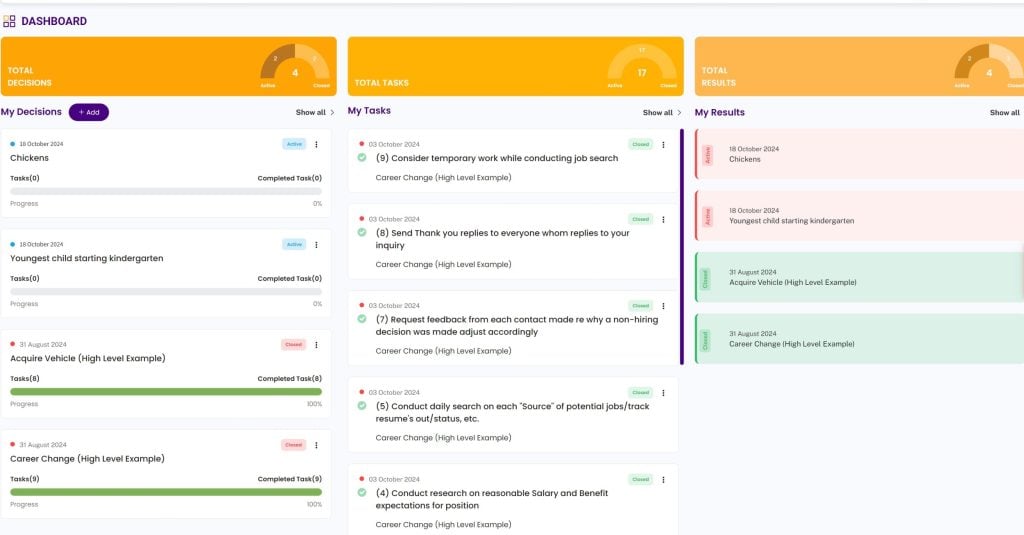Self-awareness is the cornerstone of personal growth, and it’s the key to living your life in a manner that aligns with your values, goals, and beliefs. The PathMaker Mindfulness Manager provides a powerful way to develop deeper self-awareness, offering advanced techniques and features designed to help you learn, apply, and evolve. In this blog, we’ll dive into the tool’s most effective features and show you how you can use them to enhance your life journey.
Understanding the PathMaker Mindfulness Manager
What is the Mindfulness Manager?
The PathMaker Mindfulness Manager acts as your personal guide to self-discovery, helping you identify the core influences in your life. From your values and beliefs to your emotions and behaviors, this tool empowers you to understand how these factors shape your decisions and life trajectory. By using this tool regularly, you can hold yourself accountable to enhance your ability to make choices that align with your goals and life purpose.
Key Features and Functionalities
- Dashboard: The Mindfulness Manager’s dashboard provides a comprehensive overview of all your mindfulness activities, both active and completed. It displays a summary of each task and its results, allowing you to see everything at a glance on a single page.

- Mindfulness Manager: One of the standout features of the Mindfulness Manager is its ability to create custom reflections of each experience in detail. Instead of just answering predefined questions, you can craft personalized prompts tailored to your current focus or challenges. This allows for a deeper dive into specific areas of your life. The Mindfulness Manager is where you input relevant details, such as:
- Influences Tab: Explore external factors that may have shaped an experience.
- Actions Tab: Document specific behaviors and responses in a given situation.
- Guideposts Tab: Note key principles, spiritual beliefs, or personal values guiding your choices.
- Emotions Tab: Track emotional states and their influence on outcomes.
- Self Tab: Dive into mental, physical, or spiritual insights that emerge from your reflections.
- Tasks Tab: Transform insights into tangible next steps, ensuring growth doesn’t stay theoretical.
By documenting life experiences, users can recognize emotional triggers and align future actions with their values.
- Tasks: To move beyond reflection, the Task Board helps users turn insights into actionable steps. Users can:
- Create tasks related to personal growth objectives.
- Prioritize and track actions that align with self-awareness insights.
- Set reminders for self-reflection check-ins.
- Results: The Results Tracker consolidates reflections and personal growth milestones, helping users visualize:
- Trends in emotional responses and decision-making.
- Long-term patterns in self-awareness.
- Areas where growth and adjustment are needed.

Best Practices for Using the Mindfulness Manager
- Engage in Regular Reflection
Consistency is key. Make it a habit to document experiences weekly to recognize patterns and enhance self-awareness. - Categorize and Organize Insights
Use categories to ensure a structured approach to self-analysis. - Translate Insights into Action
Leverage the Task Board to implement tangible changes based on reflections. - Monitor Progress Over Time
Use the Results Summary in Life Book to evaluate emotional and behavioral growth periodically - Built-In Help Center
If you ever feel stuck or need a quick hint, simply click the ? icon on any page. You’ll find on-screen suggestions and helpful tips tailored to the specific feature or step you’re working on.
Tracking Growth and Refining Self-Awareness
The PathMaker Mindfulness Manager empowers users to track their emotional and behavioral patterns over time. By consistently reflecting on experiences, individuals can:
- Identify and address negative thought patterns.
- Strengthen positive habits and responses.
- Align actions with long-term personal values.
This ongoing process ensures that users make intentional, informed decisions that contribute to meaningful self-development.
Use Cases and Examples for the Mindfulness Manager
To illustrate how the PathMaker Mindfulness Manager works, let’s consider an individual who had a heated, personal argument with a valued family member that led to a negative result.
- Step 1: Document an Experience
- The user considers each of the five (5) areas of focus (i.e., tabs) and enters their applicable thoughts for each. They consider the Ideas & Best Practices referenced in the Help Center.
- Step 2: Analyze Influences and Patterns
- Considering what you entered in the 5 Tabs, identify and document how each of these elements may have contributed to the outcome with that family member and why these things may have occurred (e.g., unresolved issues with that family member, perhaps someone was having a ‘bad day’ and reacted poorly, etc.).
- Step 3: Create Actionable Steps
- With insights noted in each of the tabs, create task(s) that may help lead to a better outcome with that family member and perhaps help you evolve as well: “Set time to discuss event with that family member in a more positive fashion”,” List the different ways you could have responded that might lead to a more positive outcome”, etc.
- Step 4: Track Progress and Adjust
- The Results Tracker helps the user monitor improvements in your introspections over time and refine their self-awareness approach.
Start Transforming Your Life with Deeper Self-Awareness
The PathMaker Mindfulness Manager is your key to unlocking deeper self-awareness and personal growth. Its four interconnected boards—Main Dashboard, Mindfulness Manager, Tasks, and Results—help you uncover patterns in thoughts, behaviors, and emotions, guiding you toward decisions that align with your life purpose. Self-awareness is an ongoing journey, and every insight gained and action taken moves you closer to living a life aligned with your values and goals. Keep exploring, reflecting, and sharing your growth journey to inspire others.